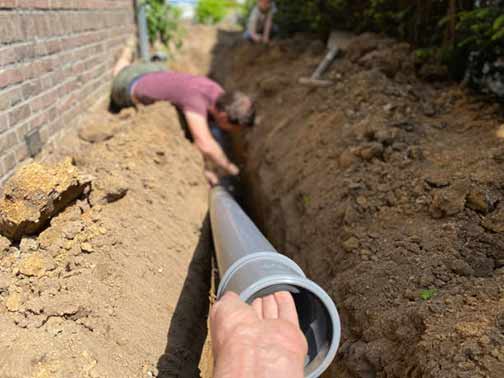
Sewer line replacement is one of the most expensive projects you will ever undertake in your home, says Compass Management.
Unlike popular home improvement projects, such as a bathroom or kitchen renovation, replacing your sewer line will not improve the aesthetic appeal of your property.
Yet a functioning sewer line is one of the key factors in the habitability of your home.
The impact of a broken sewer line will touch almost every system in your building.
We will discuss some key things you should know when replacing your sewer line.
The article explains how to choose between sewer line repair and sewer line replacement, as well as other vital information.
Should you repair or replace your sewer line?
Replace your sewer line if any of the following is true about it. If not, you may repair the line.
The sewer line is old
Sewer lines are expected to last at least 50 years. If your sewer line is near or past its retirement age, you should replace it.
The pipe material is problematic
Orangeburg, cast iron and clay are plagued by rust and tree root invasion. If your sewer line has these materials, replace it.
It has chronic long-term issues
If the sewer line suffers from persistent leaks, cracks, clogs and blockages, you should replace it to avoid costlier issues.
There have been previous repairs
If a section of the sewer line was repaired previously but it is damaged again, the best option is to replace it.
The repair cost is high
It makes no sense to repair a sewer line if the price is up to 40%-50% of the cost of replacing the line.
Conducting a sewer camera inspection will help you make an informed decision about whether to replace or repair the line.
What are the available options when replacing your sewer line?
When replacing the sewer line, you can use a traditional replacement method or a trenchless replacement method.
Traditional sewer line replacement method
With this method, the contractor has to dig into your yard to extract the old pipe before installing the new sewer line. The cons of the traditional method include:
- Damage to landscaping and other structures in the path of the sewer line.
- Costs more, because you will pay for sewer line replacement and landscaping restoration.
- Takes more time; your plumbing will be out of commission for a while.
On the other hand, the traditional sewer repair method has the following advantages:
- It will correct any installation issues present in the old line.
- The internal diameter of the sewer line will not change, you can even increase its size.
- The old pipe will be completely removed, instead of being left in the ground.
Trenchless sewer replacement methods
With this method, your sewer line can be replaced without any need to dig up your lawn. There are two types of trenchless sewer replacement methods:
Pipelining: A new pipe is installed inside the existing pipe by inserting an epoxy-coated sleeve into the line.
Pipe bursting: The old pipe is broken apart by a device, which simultaneously pulls in a new pipe to replace the old one.
The cons of these methods are:
- It will reduce the internal diameter of your sewer line
- It cannot be used with some sewer lines
On the other hand, trenchless sewer replacement has the following advantages:
- It can be completed in one day, which makes it minimally disruptive.
- It is safer because the risk of accidents is greatly reduced.
- It costs less money because there are no restoration costs.
Ultimately, the method you choose will depend on the specifics of your situation.
As a rule, when trying to fix a damaged sewer line, you want to repair it first. Only replace the sewer line if repairing it is no longer an option.
Secondly, you want to get the opinion of at least two licensed and experienced local plumbers before you make a decision.
What to know before sewer line replacement
Before replacing your sewer line, here are three things you want to think about:
- How much you need: This depends on the extent of damage, the materials you choose and your preferred repair method. You may only need to replace a section of the line.
- The materials: Whatever you do, ensure you don’t use low-quality materials in your sewer line. You want to use durable materials that will last a long time.
- Your plumber: Choosing the right plumber is vital because they can help you make the right choices about whether to repair or replace the sewer line and which methods to use.
Finally, remember that replacing your sewer line is not the end of the process. Proper sewer line maintenance, with yearly inspections and drain cleaning, is essential for the performance and longevity of your sewer line.


